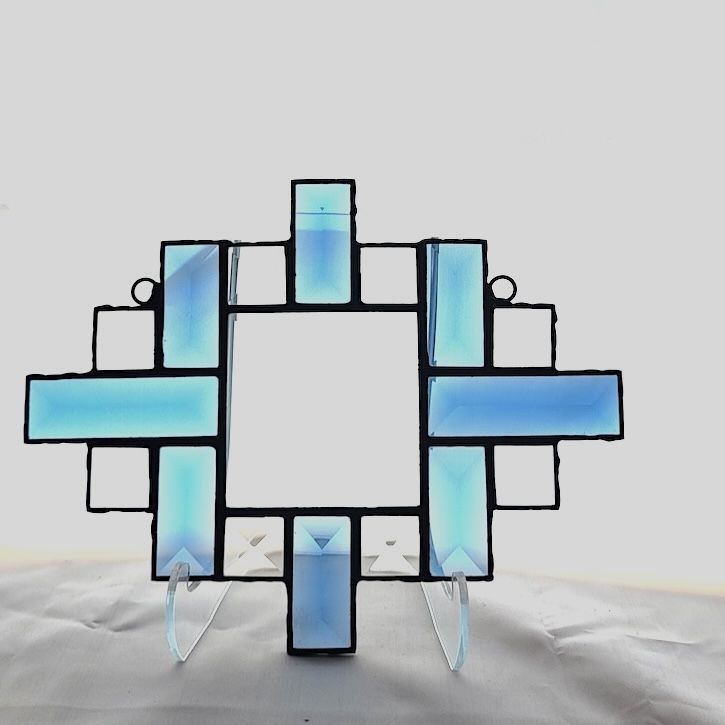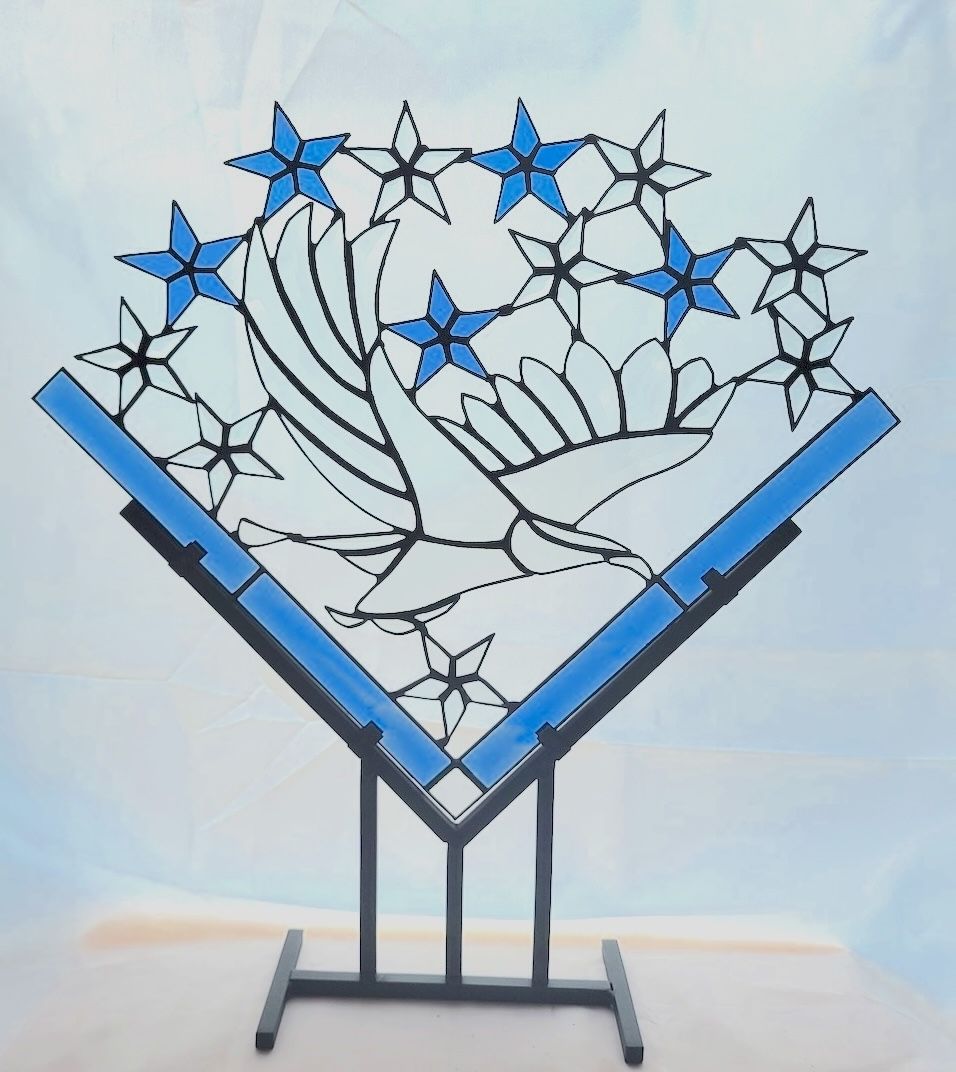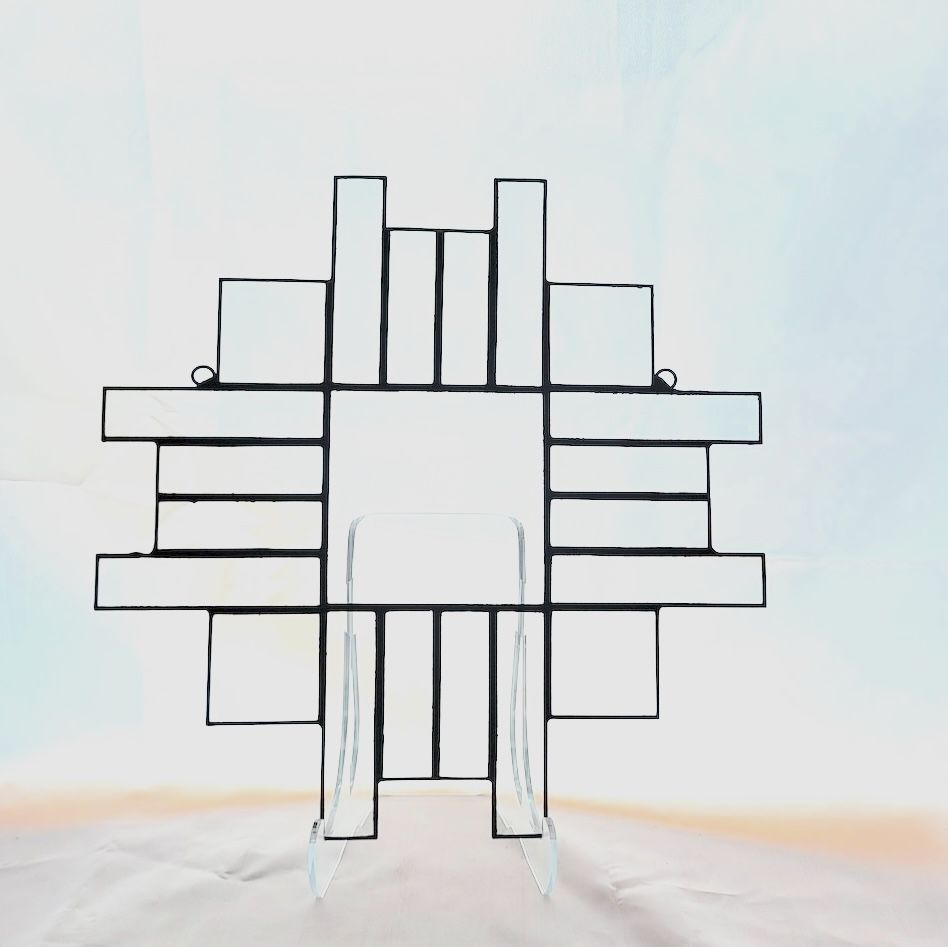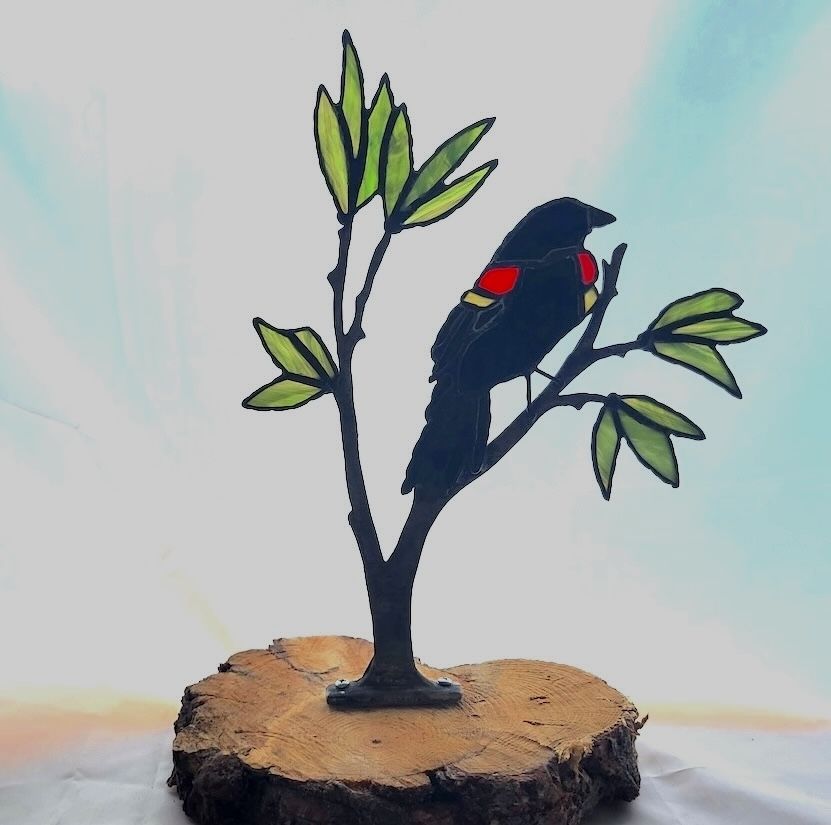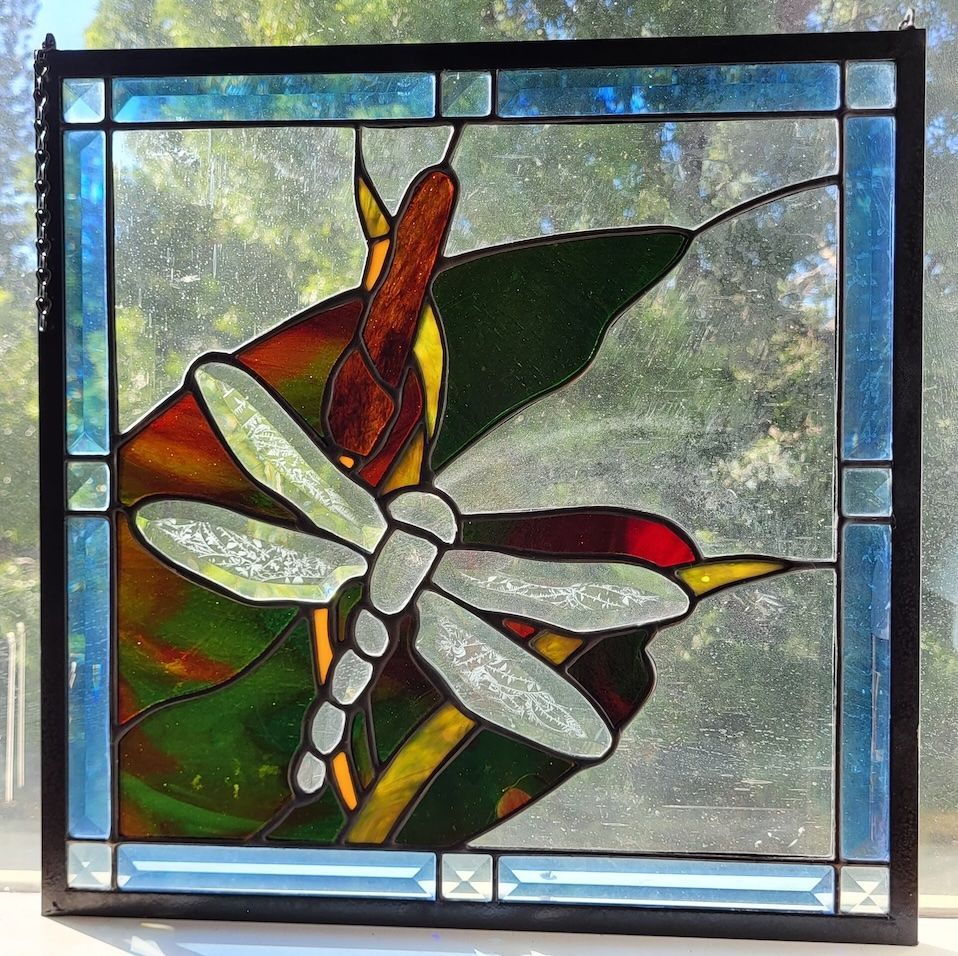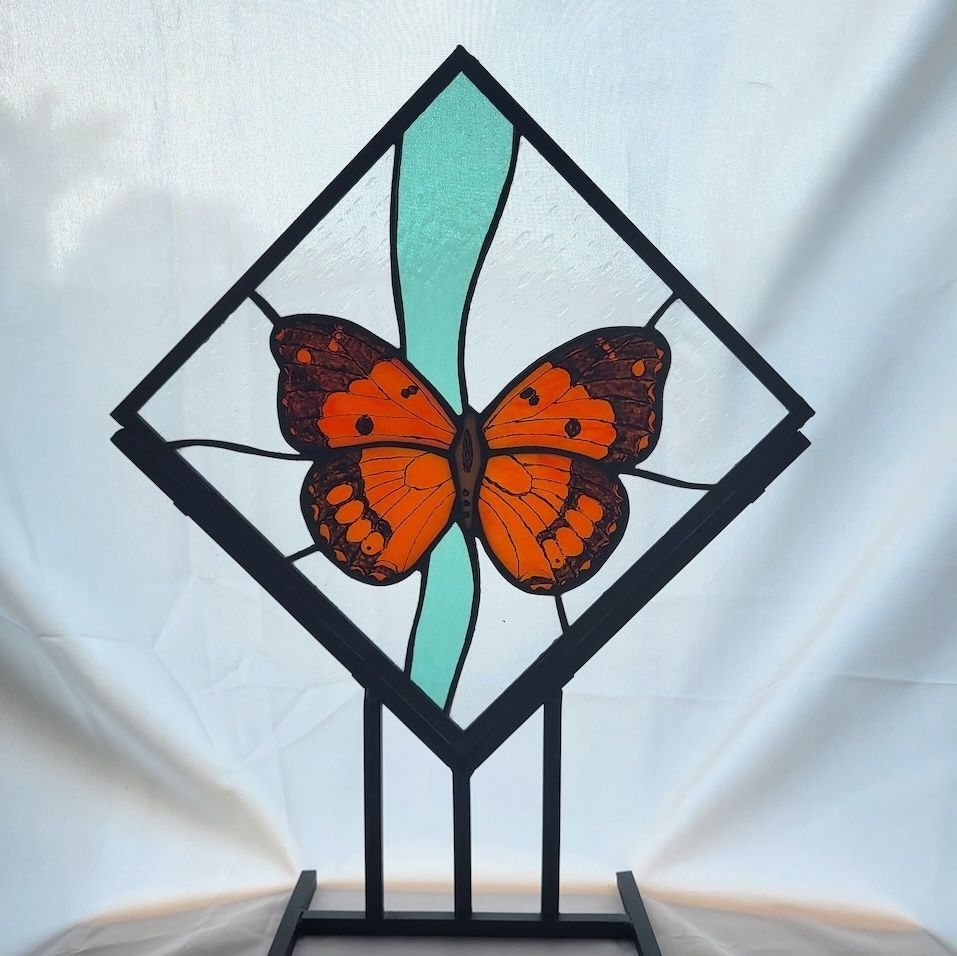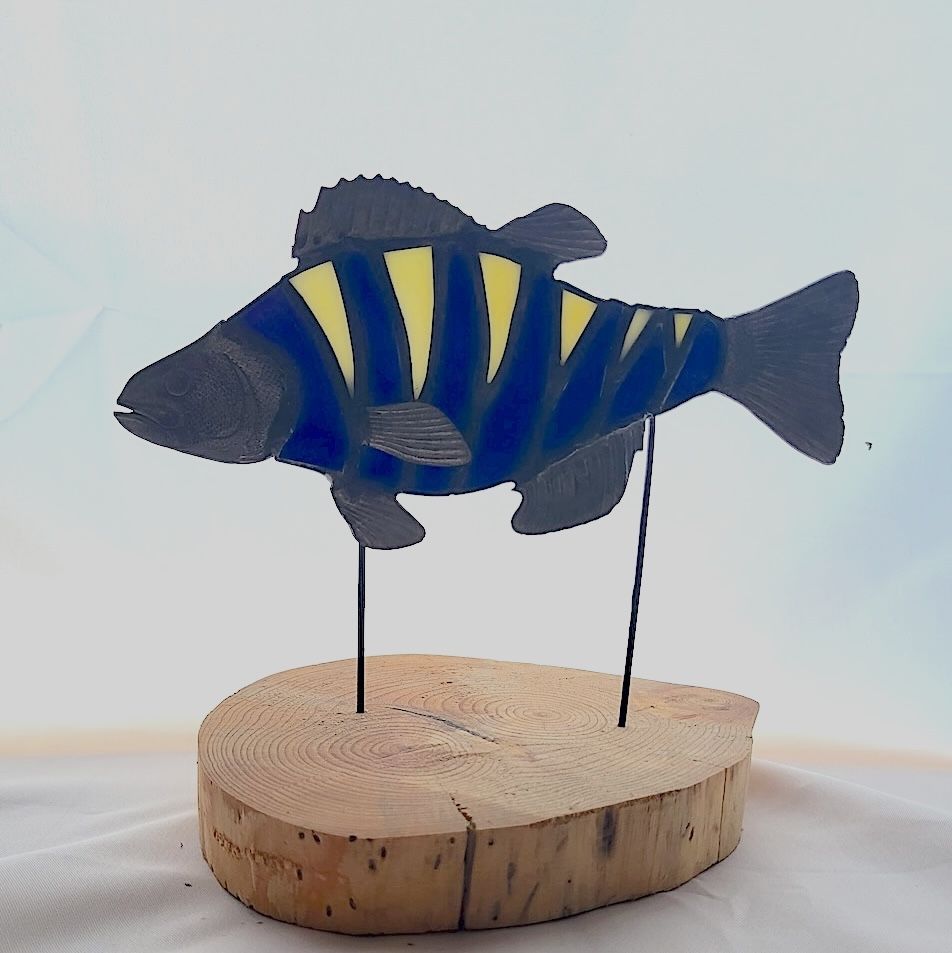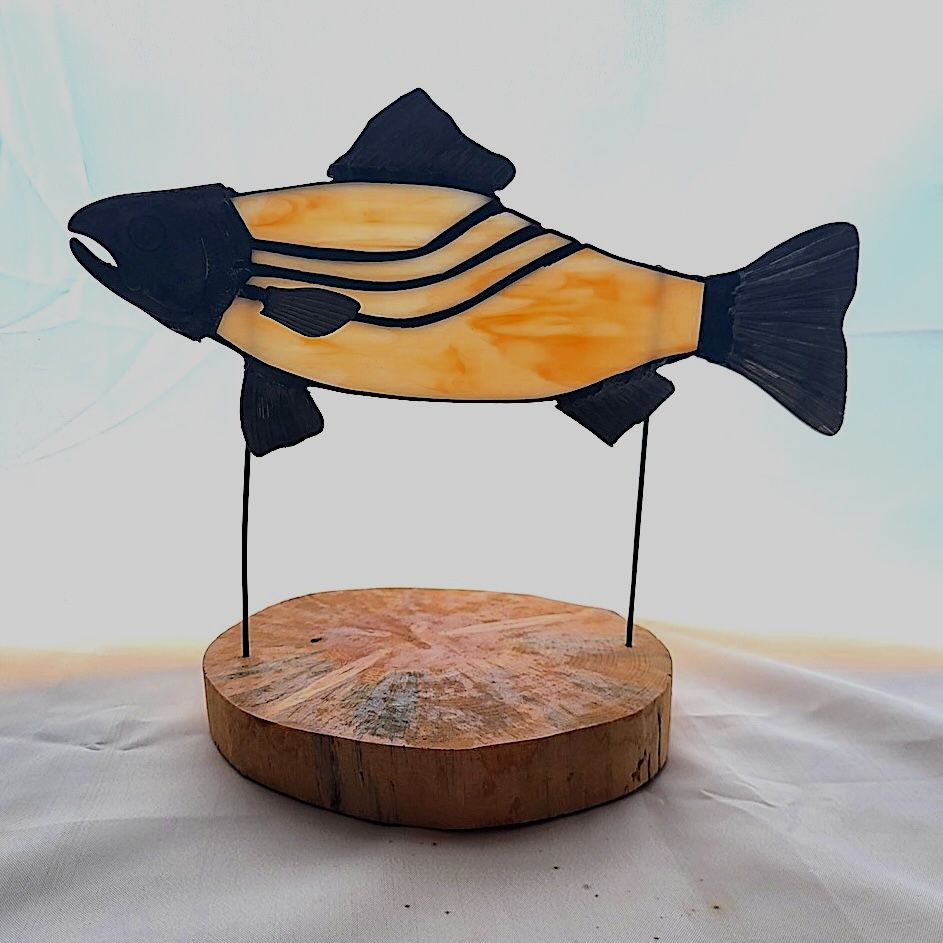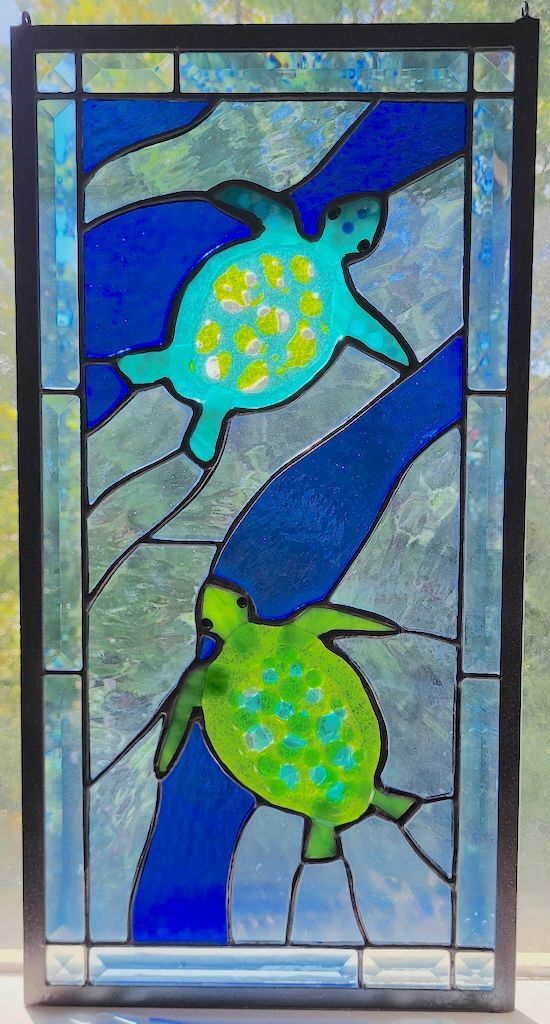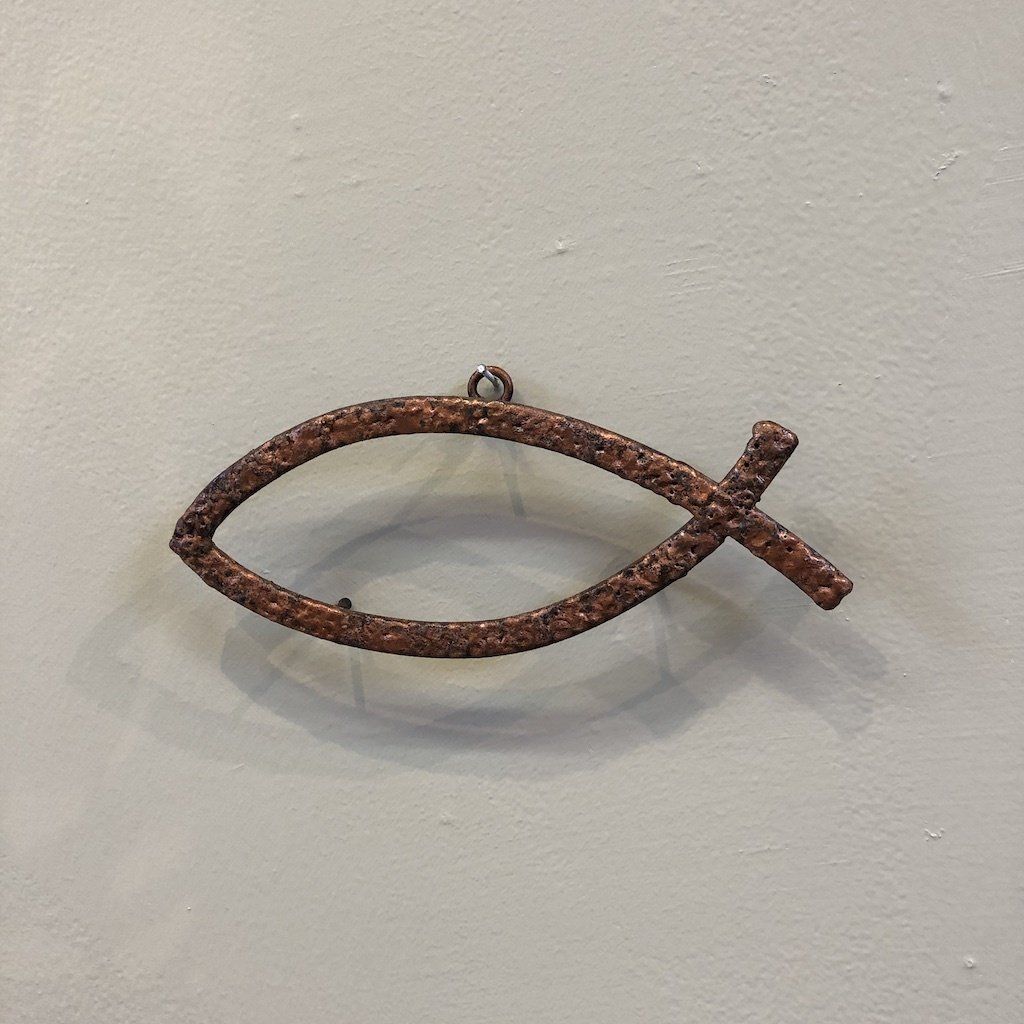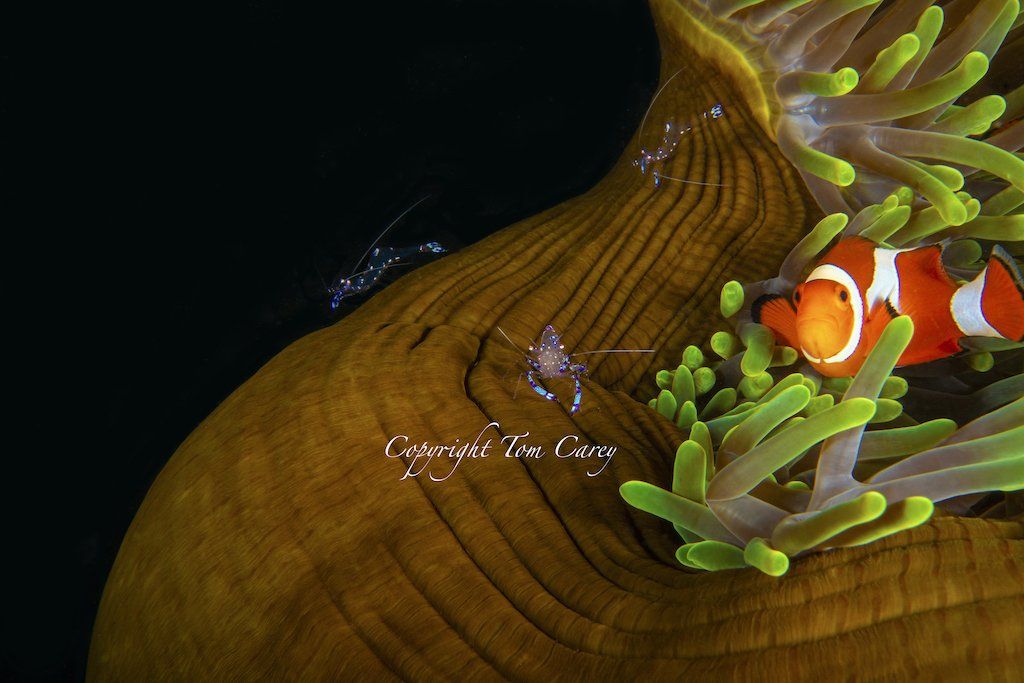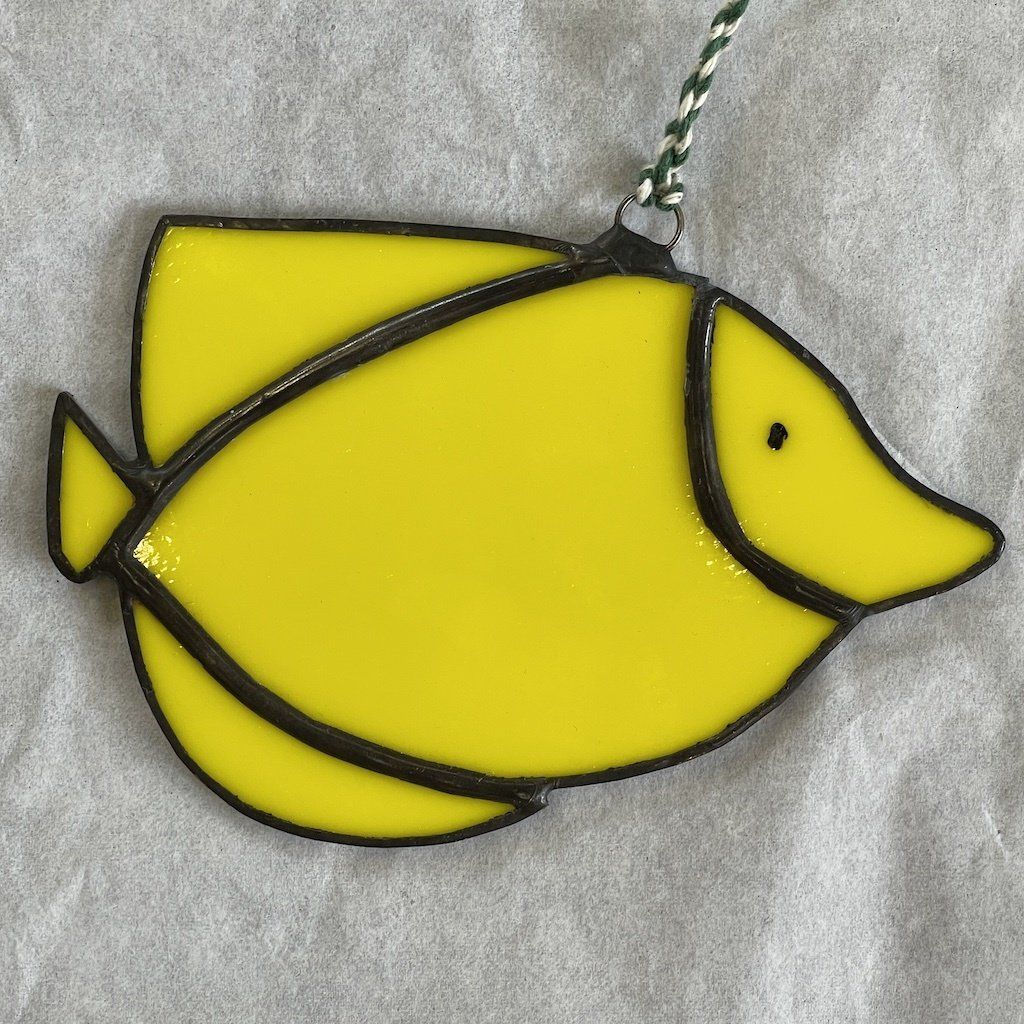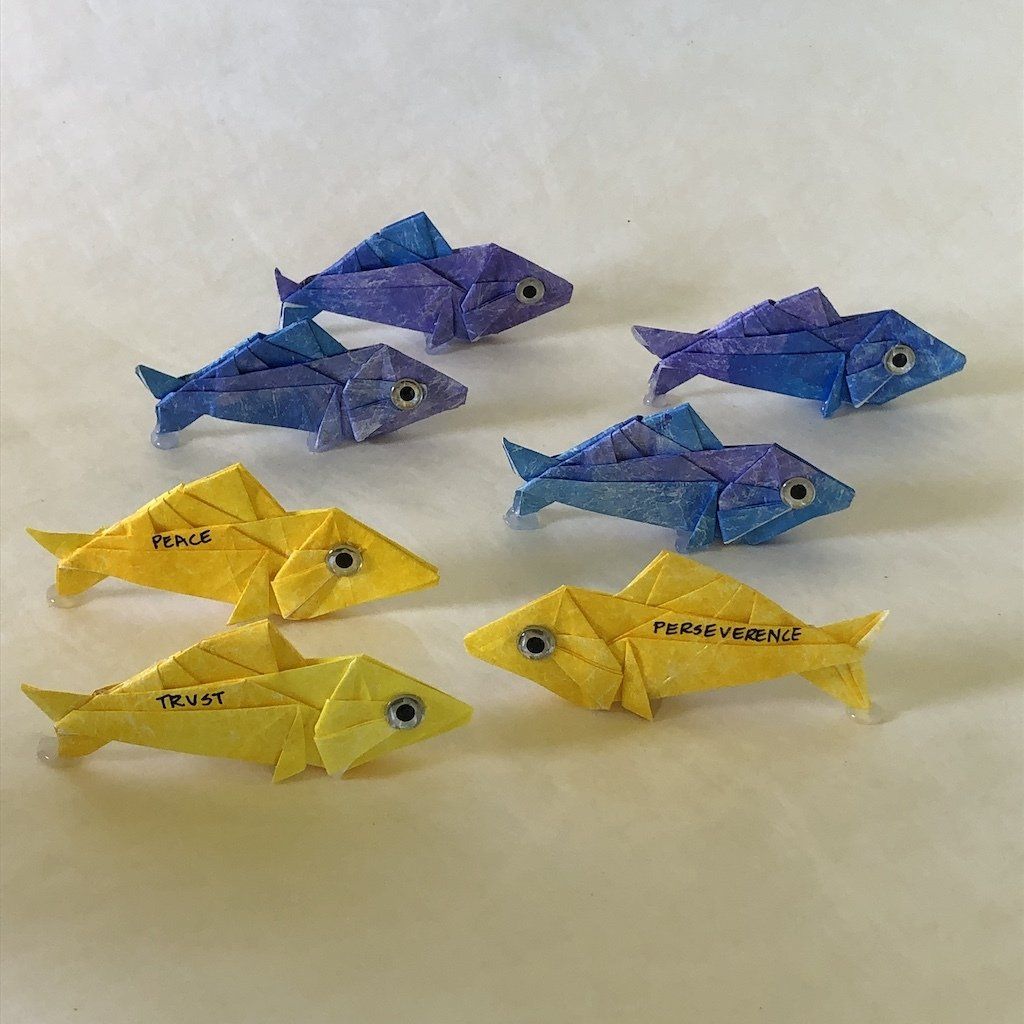January 2024 at the Gallery
Volume 15, Issue 1
Featured Artist Bill Jaeger
Approaching its twentieth anniversary, Bill Jaeger's encore career as a stained glass designer and art has been both successful and gratifying. Designing and making stained glass is Bill’s “happy place” and hardly a day goes by when he does not spend time in his studio.
Bill learned the basics of stained glass some 45 years ago, but since 2004, he has completely immersed himself in the art and stretched his creative capabilities. He has honed his skills as well as developed a style that is evident in every piece he makes.
When asked about his thoughts and plans for the upcoming new year, Bill offered up a quote he’d recently seen: “Art is making a thing, and then trying to make a better one, and (then) you keep doing this as long as you can. And that’s a pretty good life.”
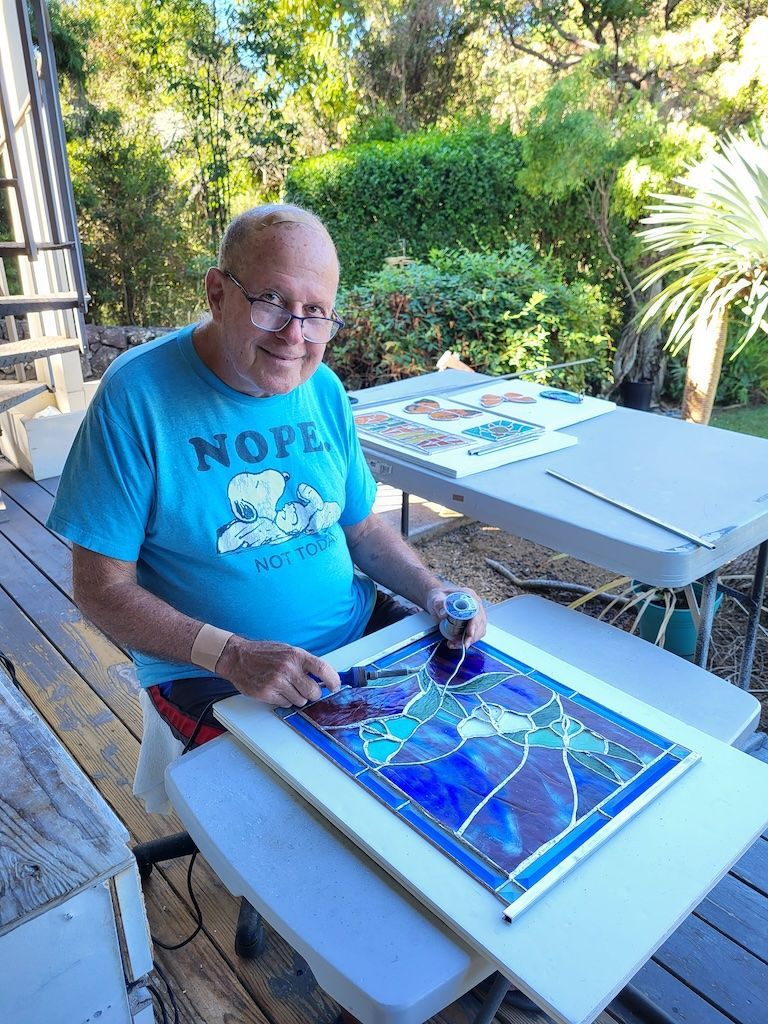
One might argue that each piece Bill makes is an original. Even if reusing a pattern, each time he does so involves selecting and cutting new glass for each piece in the composition. And since Bill incorporates a lot marbled and textured glass, no two pieces will ever be exactly alike. That being said, Bill’s portfolio of original designs is sizable. Some have matured with repetition and there are always new works in progress.
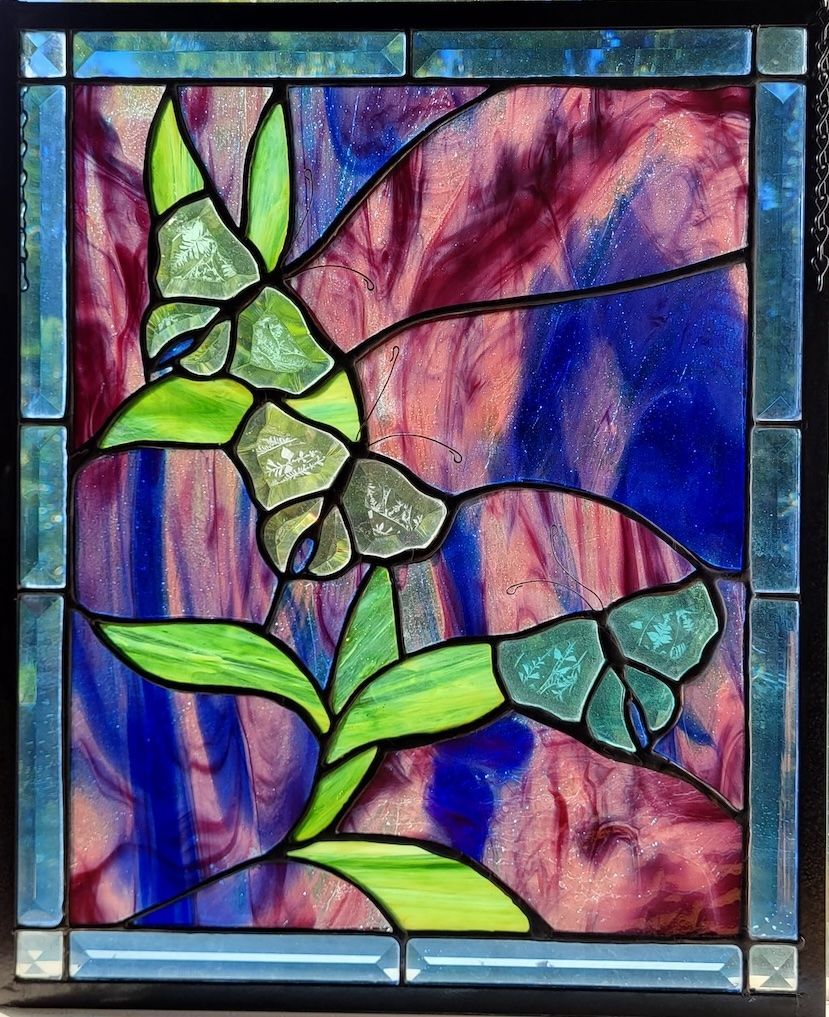
Makahiki
Visitors to Hawaii during this time of the year are very likely to encounter the phrase, Haoli Makahiki Hou, which loosely translates to Happy New Year.
Ancient Hawaiians (and modern ones too) marked the new year with the celebration of
Makahiki
which was dedicated to the God Lono.
Makahiki season arrives when the constellation Pleiades rise over the horizon at sunset. Generally, the season runs for about four months, from October to February.
The god Lono is associated with rainfall, agriculture, music, and peace. Consequently, during Makahiki people did not work or wage war, but celebrated through sport, dancing, and spiritual observation.
Ancient Hawaiians took this time to engage in dancing hula, feasting, and sporting games. Boxing, wrestling, javelin throwing, sled racing, surfing, and canoe races. Work was prohibited and it was a quieter, less busy season.
Maka’ainana or commoners gave ho’okupu or gifts/offerings to the gods in an act of spiritual cleansing. Ho’okupu offerings included pigs, kalo (taro), sweet potato, feather weavings, woven mats, and kapa cloth. These offerings were taken to alters on heiau (temples) dedicated to the god Lono.
The best place for visitors to experience Makahiki is at Puʻuhonua o Hōnaunau National Historical Park in South Kona. This park offers many
Makahiki activities and talks from lineal descendants. Local school children compete in tournaments of
Makahiki games like stone disk rolling and sliding darts. In addition to sporting games, students learn
kōnane,
a Hawaiian chess game, and they get to practice their Hawaiian language skills.
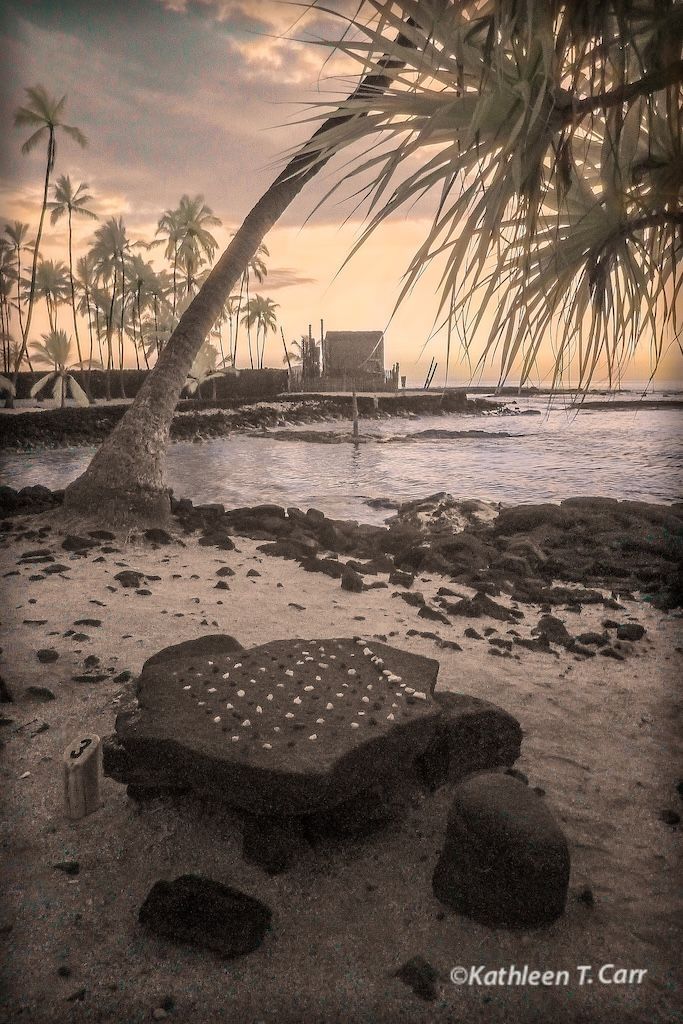
Makahiki Art
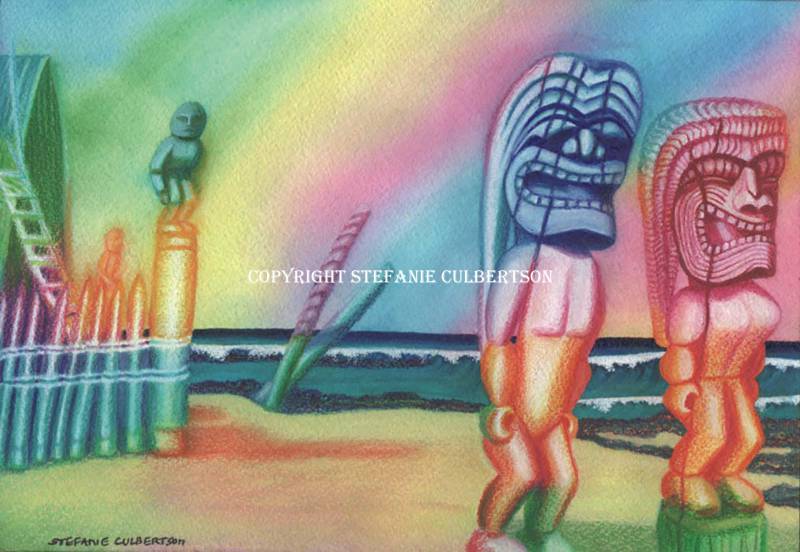
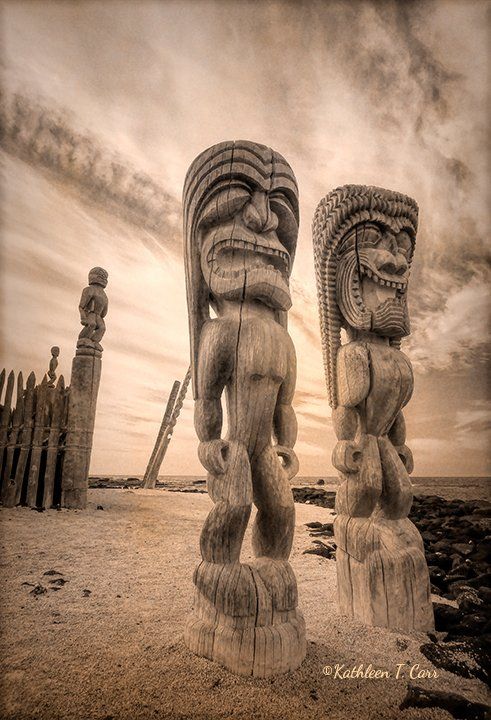
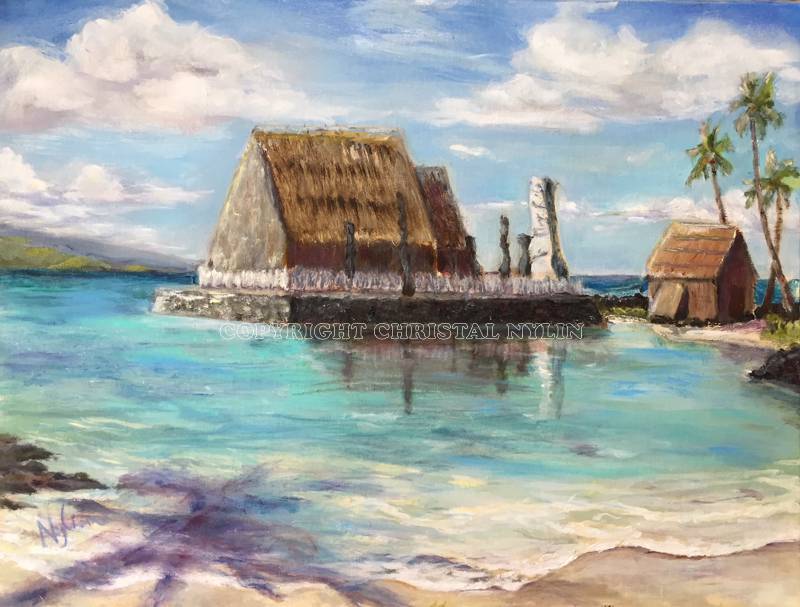
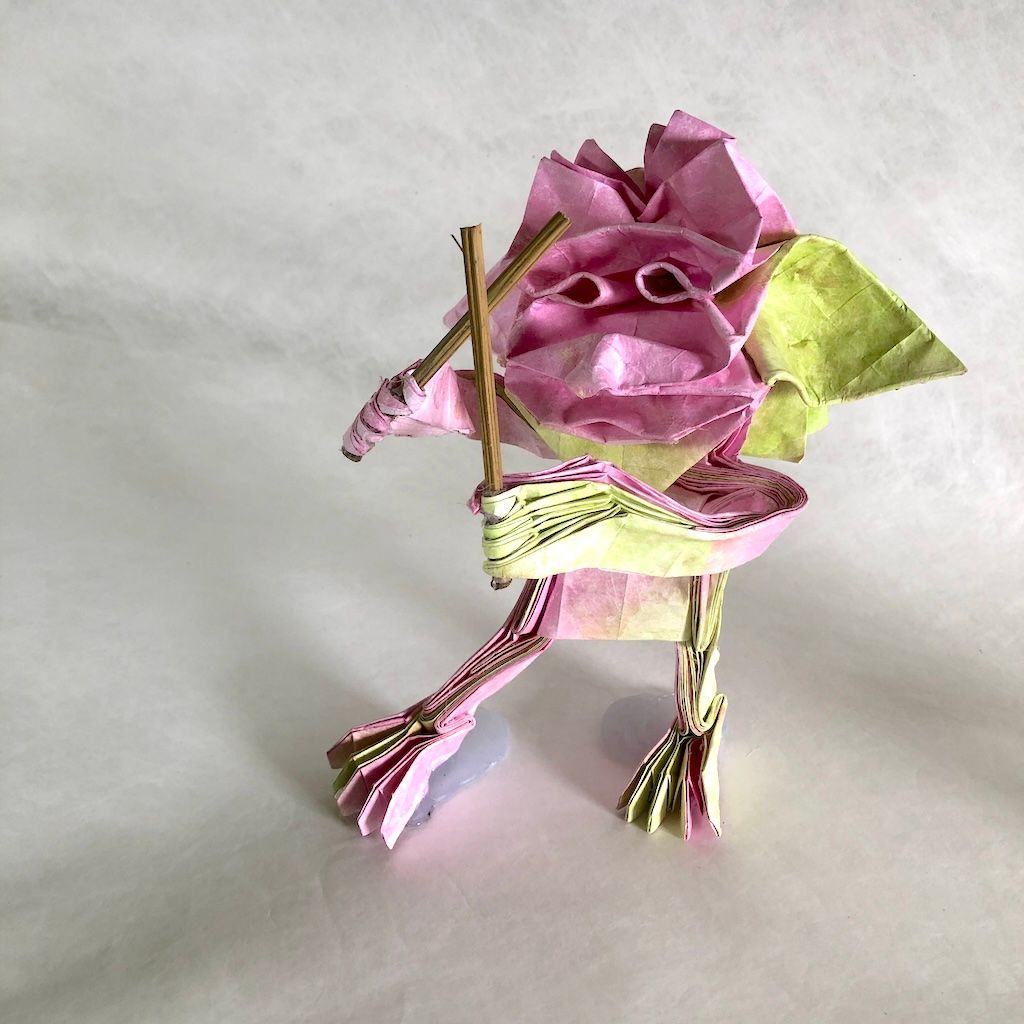
From all of us at
Kailua Village Artists,
Haoli Makahiki Hou!
Contributors to this article:
Tamisha Lee
After twenty years, Bill's portfolio of designs is impressive and keeps growing.
For this article, I delved deeper into the copper foil technique that Bill uses to describe his work. Here’s what I learned: Solder is made from tin plus lead, copper, or silver. Whatever the metal combination, solder does not adhere to glass!
The copper foil technique involves wrapping the edges of each piece of precision cut glass in a thin layer of copper foil “tape.” The solder fuses to the copper foil so that each piece of glass is permanently secured in position. Notice that once complete, all of the glass pieces are solidly fixed in position; none of them move at all. When you think about it, it really is technologically amazing to have pieces of glass locked in position well enough to be able to withstand weather — wind, rain, and earthquakes! This is functional art at its finest.
Part of what makes it work is that the glass is precision cut. Bill hand cuts each piece of glass so that they fit together just about perfectly, with just the barest even gap for the solder. Bill has an assortment of glass cutting and grinding tools to achieve this degree of precision. The initial shaping is achieve by scoring and breaking pieces of glass. Finished shaping is done with a grinding tool. Watching Bill work, I found my own fingers instinctively curling in upon themselves. As beautiful and fascinating as glass is as a medium, it is definitely not one that anyone and everyone can comfortably work with!
Once the glass pieces are soldered together, a patina is applied, which chemically reacts with the solder causing it to blacken. Then the piece is cleaned and waxed. Finally, the metal frame is painted to achieve that "finished" look.
To recap the process: design a template, select glass, precision cut, wrap all edges in copper foil tape, frame, solder, apply patina, clean, wax and finish the frame.
To meet featured artist Bill Jaeger and see his latest work, come, and talk story with him at the gallery on Saturday, January 6, or Saturday, January 27, 2024. While working in the gallery, he will be demonstrating the above-mentioned copper foiling.

